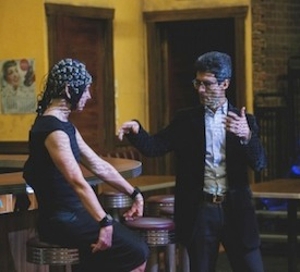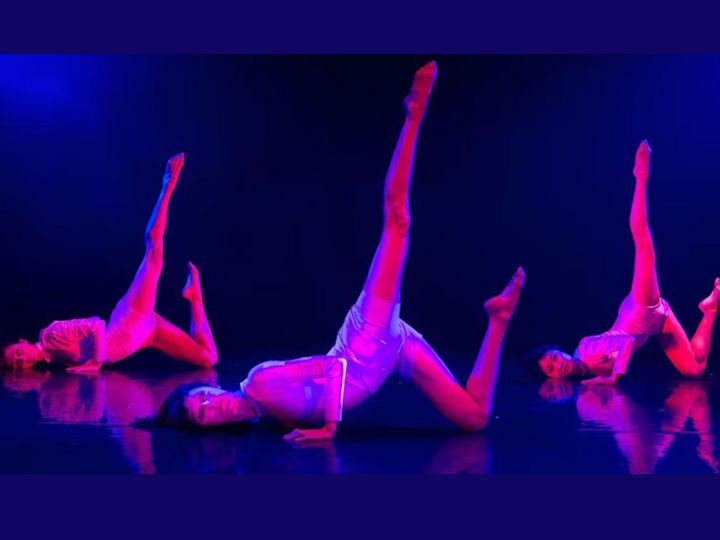‘The Slowest Wave/Butoh and The Brain’ on Feb 10 is Culmination of Performance-Research Study
Furthering ongoing studies at the University of Houston on the effect of creativity on the brain, Vangeline Theater/New York Butoh Institute announces a free public showing of “The Slowest Wave/Butoh and The Brain,” the culmination of an art-science performance-research study on Feb. 10 at 6 p.m. at the University of Houston Student Center South Theater.
This showing is being offered as part of a new study investigating brain dynamics of dancers through the use of electroencephalography (EEG) to record the participants’ brain waves while they are performing Butoh, a postmodern dance style that originated in Japan. The study is a collaboration between the New York-based Vangeline Theater dance company, the Laboratory for Noninvasive Brain-Machine Interface Systems, IUCRC BRAIN Center, The Rockefeller University, and the Neurobiology of Social Communication Lab (funded by the City University of New York, Rockefeller University and New York University).
Jose Luis Contreras-Vidal is the Hugh Roy and Lillie Cranz Cullen Distinguished Professor of Electrical and Computer Engineering and director of the NSF Industry–University Cooperative Research Centers for Building Reliable Advances and Innovations in Neurotechnology (IUCRC BRAIN) at the University of Houston. He has pioneered noninvasive brain-machine interfaces to exoskeletons and prosthetics to restore motor function in individuals with disabilities. His work at the nexus of art and science is opening new windows to study the neural basis of human creativity in children and adults while informing neuroaesthetics, neural interfaces and the power of the arts (dance, music, visual art) as a modulator of brain activity.
In collaboration with Contreras-Vidal, neuroscientists Sadye Paez, New York University’s Center for Ballet and the Arts and Constantina Theofanopoulou, Hunter College, City University of New York and composer Ray Sweeten, Vangeline choreographed a 60-minute ensemble Butoh piece, which is uniquely informed by the protocol established for a scientific pilot study researching the impact of Butoh on brain activity during Butoh dancing. For the groundbreaking art-science study, dancers' brain activity will be recorded at the University of Houston with real-time visualization of the dancers' neural activity. Results will then be disseminated in scientific journals.
Vangeline and Sweeten have built on a 20-year history of creative collaboration with a soundscape that is informed by techniques of brainwave entrainment (techniques that affect consciousness through sound). “The Slowest Wave” investigates through the use of scalp EEG how brain waves during Butoh dancing compare to those emitted during other conscious or unconscious motor behaviors, such as speaking or meditating. Moreover, the study will elucidate the functional neural networks of the dancers and the neural synchrony within and between them.
This project is meant to foster connections and understanding between dancers, artists, scientists, engineers and audiences from around the world.
“The Slowest Wave” is supported in part by an award from the National Endowment for the Arts, as well as the NSF IUCRC BRAIN Center at the University of Houston, and by public funds from the New York City Department of Cultural Affairs in partnership with the City Council, and the New York State Council on the Arts with the support of the Governor and the New York State Legislature.
For more information and to RSVP, visit here.

